Camera traps have been a key part of the conservation toolkit for decades. Remotely triggered video or still cameras allow researchers and managers to monitor cryptic species, survey populations, and support enforcement responses by documenting illegal activities. Increasingly, machine learning is being implemented to automate the processing of data generated by camera traps.
A recent study published showed that, despite being well-established and widely used tools in conservation, progress in the development of camera traps has plateaued since the emergence of the modern model in the mid-2000s, leaving users struggling with many of the same issues they faced a decade ago. That manufacturer ratings have not improved over time, despite technological advancements, demonstrates the need for a new generation of innovative conservation camera traps. Join this group and explore existing efforts, established needs, and what next-generation camera traps might look like - including the integration of AI for data processing through initiatives like Wildlife Insights and Wild Me.
Group Highlights:
Our past Tech Tutors seasons featured multiple episodes for experienced and new camera trappers. How Do I Repair My Camera Traps? featured WILDLABS members Laure Joanny, Alistair Stewart, and Rob Appleby and featured many troubleshooting and DIY resources for common issues.
For camera trap users looking to incorporate machine learning into the data analysis process, Sara Beery's How do I get started using machine learning for my camera traps? is an incredible resource discussing the user-friendly tool MegaDetector.
And for those who are new to camera trapping, Marcella Kelly's How do I choose the right camera trap(s) based on interests, goals, and species? will help you make important decisions based on factors like species, environment, power, durability, and more.
Finally, for an in-depth conversation on camera trap hardware and software, check out the Camera Traps Virtual Meetup featuring Sara Beery, Roland Kays, and Sam Seccombe.
And while you're here, be sure to stop by the camera trap community's collaborative troubleshooting data bank, where we're compiling common problems with the goal of creating a consistent place to exchange tips and tricks!
Header photo: ACEAA-Conservacion Amazonica
Systems Engineer at Edge Impulse, experiencce with hands-on edge machine learning for wildlife conservation
- 0 Resources
- 0 Discussions
- 5 Groups
- @StephODonnell
- | She / Her
WILDLABS
I'm the Community Manager at WILDLABS



- 149 Resources
- 651 Discussions
- 30 Groups
Founder & Director of Tech 4 Conservation
- 0 Resources
- 1 Discussions
- 3 Groups
DIY electronics for behavioral field biology



- 1 Resources
- 46 Discussions
- 4 Groups
- 0 Resources
- 0 Discussions
- 5 Groups
- @Gathoni
- | Her/she
PhD Candidate at Nottingham Trent University, UK. Ecologist with a passion for wildlife conservation and conservation technology with foundational training in BSc and MSc Rangeland Management (Ecology option). Current project: Use of acoustics to monitor ecosystem restoration.
- 3 Resources
- 0 Discussions
- 7 Groups
Software engineer
- 0 Resources
- 3 Discussions
- 3 Groups
Camera Trap Technologist at Large


- 0 Resources
- 30 Discussions
- 1 Groups
Society for Conservation GIS


- 0 Resources
- 20 Discussions
- 5 Groups
Friends of Brisbane Ranges

- 0 Resources
- 32 Discussions
- 5 Groups
- @Thomas_Luypaert
- | He/him
Norwegian University of Life Sciences (NMBU)
Ecological monitoring enthusiast with a focus on ecological and conservation research
- 1 Resources
- 1 Discussions
- 7 Groups
Wildlife Drones
Wildlife Drones has developed the world’s most innovative radio animal-tracking system using drones so you can track your radio-tagged animals like never before.

- 11 Resources
- 8 Discussions
- 32 Groups
May 2024
event
October 2024
November 2023
event
October 2023
event
event
Texas Chapter of The Wildlife Society’s Annual Meeting 2023
20 February 2023 10:56pm
Catch up with The Variety Hour: February 2023
14 February 2023 6:26pm
Need Assistance regarding selecting a camera
23 December 2022 10:50am
27 January 2023 12:04pm
Hi @vishnuthavara so you need a camera that does both timelapse and is motion activated? Something like this maybe:
11 February 2023 3:20am
Hi Vishnu,
Considering only motion detection video, it is possible to modify (most) camera traps to trigger an external piece of equipment like an audio recorder. I'm not aware of any suitable off-the-shelf recorder, but I can build you one. However many camera traps that will take video will also record audio, although the quality may not be suitable for all types of audio analysis.
Deep Sea BRUVS Development
28 January 2023 1:41am
11 February 2023 3:07am
Hi Titus,
If the usual syntactic foam sources aren't available, an option may be to add an empty dry housing or use a larger housing for the BRUV, just to provide the buoyancy.
You can make your own syntactic foam from glass microballoons and epoxy resin, but this will require experimentation and testing. For sub-surface buoyancy, you could also use a jerry can full of cooking oil, or a coil of polypropylene rope.
Hiring Full Stack Developer at Conservation X Labs
10 February 2023 5:35pm
How do I get started with setting up my camera trap to monitor wildlife?
6 February 2023 5:42pm
Job: Building a network of conservation tech across continents
2 February 2023 1:50pm
Consultancy opportunity: Wildlife monitoring specialist
31 January 2023 11:26am
Solar panels in the tropics
26 January 2023 12:28am
27 January 2023 1:23pm
Hi Tom,
I'm with Akiba, you have to test. A collaborator has deployed solar-augmented kit in secondary jungle and some of them got enough light, and others didn't, so it can work. The open circuit voltage of solar panels doesn't change a whole lot in dim light, but the current drops drastically. So you would choose an oversize panel of the same voltage (or a bit higher).
Thanks
27 January 2023 3:56pm
I've been intrigued by this topic. Thinking about ways you could use drones or some kind of launcher to deploy panels above the canopy. Sadly I live in the great white north so I have no way of testing any concepts. Maybe even some kind of solar balloon that could float above the canopy. Interesting design problem.
30 January 2023 10:10am
Hey Tom,
Since the output is dependent on a couple of factors such as the solar irradiance of the place, shading from the canopy, the type of solar panels (mono, poly or amorphous) and orientation of the panels, etc, I'd suggest you use a software to simulate the different parameters to get an almost accurate estimation of the output. You can try PVsyst- it has a free month trial (I haven't used it before but I hear it's great) or any other PV software :)
Does anyone have spare Bushnell Impulse traps?
20 January 2023 3:24pm
27 January 2023 11:53am
Hi @timmh I've posted a link to this on Twitter too so fingers crossed you get some replies!
All the best,
Rob
Time-lapse cameras for monitoring nesting birds in the Arctic
11 January 2023 6:37am
17 January 2023 9:28pm
Hi Chris,
We developed a time-lapse camera for Penguin Watch that ran for 3 years straight in Antarctica, so should be able to survive in the Arctic. With your Plotwatcher did you use any supplementary solar (we do in the summer months). If not, we're aiming to upgrade the camera and introduce a lower power camera module this year, which should get you the 500k images on 4 x AA 1.5v batteries, but we're a number of months away from that build so couldn't help you right away. It would be good to keep in touch to see where you get and we can help you downstream.
More on the current camera here;
20 January 2023 1:03am
Thanks Alasdair!
The Plotwatchers and Brinnos didn't require any solar for the 500K on 4aa batteries. We place the cams near the nest (actually at the nest peering into the nest bowl with a new design I came up with where the only thing above ground is a ribbon cable and the camera board attached to a metal rod we lag blot to the tundra, the batteries and main board are in a 1020 pelican case and buried; see below for an image of the above-ground portion of the cam and an image of a nest from a cam [if you look closely you can see one of the eggs just hatched and there are now 3 eggs and 1 chick in the bowl]).


I'd be very interested in what you all are working on for the next design. How small would it be?
27 January 2023 11:28am
Thanks Chris,
Probably quite similar in size to your existing setup above, but we'd use two Li-ion rechargable batteries most likely (could be an 18500). I'll be sure to share more information later this year.
Cheers,
Alasdair
Advanced Field School in Computational Ecology
25 January 2023 2:54pm
Apply Now: AI for Conservation Office Hours
18 January 2023 5:15pm
BoomBox camera trap models?
1 June 2022 6:46pm
8 September 2022 1:21am
Hi Pen-Yuan.
I need to revise what I said before. Browning devices within a specific model number have similar PCBs, ie: we worked with the BTC-8A for the Spec Ops Advantage. They're currently on the BTC-8E which we've found to have a different PCB. So I think the rule we're using on Browning at the moment (and most vendors) are that the model number needs to match, else it's likely the PCB is different. This also happened to us with Bushnell Trophycams. We're running into this issue now with a Boombox customer planning a Browning deployment. We're currently getting the camera trap in so we can reverse engineer the newer model and interface it to Boombox.
Akiba
16 January 2023 10:41am
Hi @Freaklabs and anyone still here!
@hikinghack recently conducted an autopsy of the Browning Strike Force HD Pro X (BTC-5HDPX) camera trap that I got, and I've posted some photos in this Flickr album:

In particular, there's a close-up of the board:

An initial look by my friend @htarold suggests that it might be possible to tap into the triggering mechanism:
But I wonder if @Freaklabs has any insight into how this compares to Boombox camera traps that you have worked with??
18 January 2023 11:20am
The PIR motion sensor is at the top of the device board. You can see they are using a 3-pin analog motion sensor. From there it goes into a processing circuit. Unfortunately it looks like they built their own PIR processing circuit to determine motion so it would need to be reverse engineered to determine where to connect to.
Interview for Technologies in Conservation
24 November 2022 10:07am
16 January 2023 2:42pm
I'd be happy to chat with you if you wanted! My expertise is within passive acoustic monitoring particularly. The Conservation Tech Directory might be useful for you in identifying relevant actors within the space.
16 January 2023 5:16pm
Happy to contribute [email protected]
17 January 2023 5:12pm
My original background is in ecology and conservation, and am now in the elected leadership of the Gathering for Open Science Hardware which convenes researchers developing open source tech for science. I am not working on a specific piece of technology right now, but am happy to contribute some higher-level views for your interview if that helps.
International Congress for Conservation Biology
16 January 2023 2:53pm
Best Camera Trap Models Database: Input Needed
9 February 2021 8:39pm
9 April 2022 11:46am
Many thanks, "mactadpole" for the promising remarks concerning the Browning Dark Ops Pro XD dual-lens BTC-6PXD:
"...we are extremely pleased with the BTC-6PXD. We went with these because they only use 6 aa batteries and they were smaller/lighter than the BTC-8A."
Given the similarity between the western Ecuador conditions you describe and those we face in Costa Rica the Browning - 180$ from Amazon where 37 reviews are predominantly favourable - sounds like the camera for us. Your 12.2.2021 report is now over a year old, however. Please, has anything changed since then? Any other candidate we should consider?
5 August 2022 2:00pm
Hi Shawn,
I am looking into camera traps to use for an arboreal project in Panama, I am really interested in your experience of mounting camera traps up trees. The photo shows an interesting mount, did you make it yourselves?
How were the seals on the Brownings? I have been tempted to go for reconyx cause they have really good o-ring seals but they may just be too pricy so looking for a reliable alternative.
Anything you can share will be useful.
Cheers
Lucy
15 January 2023 2:08pm
Hi Ellie, did you compile this information and is it avaiblable somewhere?
I need to upgrade the camera system in Baiboosun Nature Reserve Kyrgyzstan and this info would be of great help.
Please check: www.baiboosun.com
Thanks, Luciano.
New issue of BES' Ecological Solutions and Evidence Journal
13 January 2023 3:43am
The British Ecological Society's journals always have topics that will interest our conservation tech community - in this particular issue, you'll find research on a large-scale camera trapping effort to monitor mammals, as well as the role of citizen science in data analysis for that project.
New paper - An evaluation of platforms for processing camera-trap data using artificial intelligence
13 January 2023 12:14am
We review key characteristics of four AI platforms—Conservation AI, MegaDetector, MLWIC2: Machine Learning for Wildlife Image Classification and Wildlife Insights—and two auxiliary platforms—Camelot and Timelapse—that incorporate AI output for processing camera-trap data. We compare their software and programming requirements, AI features, data management tools and output format. We also provide R code and data from our own work to demonstrate how users can evaluate model performance.
New paper - Real-time alerts from AI-enabled camera traps using the Iridium satellite network: A case-study in Gabon, Central Africa
13 January 2023 12:12am
Sending real-time alerts from ecological sensors such as camera traps in areas with poor data connectivity is complex and involves integrating a large number of potentially complex hardware and software components. Our results demonstrate that these components can be successfully integrated to achieve reliable, near real-time alerts from camera traps under challenging field conditions.
Conservation Technology Intern (Vietnam)
11 January 2023 5:00pm
Help : Topics in Remote Sensing and Management of Protected Areas
10 January 2023 11:04am
PhD position (m/f/d) in Insect Ecology and Conservation
9 January 2023 12:53pm
Job: Conservation Technology Specialist (PT)
6 January 2023 12:49am
Otter video help!
5 September 2022 6:57pm
7 September 2022 6:12pm
Thank you for the response! I'm not sure how to find that out. It says MP4. Is that what you're looking for?
21 December 2022 7:46pm
Did you get any further with this Britnee?
26 December 2022 6:54pm
No, I was never able to figure out how to send these to anyone on here. I was hoping to learn how to clear these videos up if possible!
Android smartphone app
22 December 2022 12:13am
Help - Innovative ways to track elephant movement
28 October 2022 4:50pm
4 November 2022 5:24pm
Why would you want to avoid alerting the rangers ?
You don't need high tech for this; elephants leave very obvious tracks and sign.
7 November 2022 12:52am
Hi Tyler,
Would like to introduce you to Ceres Tags products
- Ceres Tags products come in boxes of 5, 10 and 24.
- There are some software partners such as Earthranger, Mapipedia and possibly CiboLabs that would be able to assist you with your mapping vegetation requirements
- Ceres Tag does not require any towers, base stations and infrastructure. This allows you to see any movements from the heard outside of their normal herd (boundary alerts), and you will not be disturbing any of the flora and fauna with infrastructure set up.
- For the timing you are looking at, Ceres Wild pings directly to satellite 24 times a day. For Ceres Trace and Ceres Ranch there are 4 within 24 hours. Taking into consideration, when you set up alert areas, you will get them directly to your phone/laptop via your software of choice
- Ceres Ranch is a reusable tag that has just been launched. Use it on this project, remove the tag and then use the tag on your next project
- The software you choose will assist with the history of your animal movements. Ceres Tag is integrated with 11 software partners and in-development with 18 software partners https://cerestag.com/pages/software-partners
- Understanding it is a short-term project, you would be able to use Ceres Tags products without the additional expense of setting up and removing infrastructure- towers, gateways
- With Ceres Tag, you are purchasing the box of tags and picking a suitable software to deliver the information you require. On average, a box of 10 Ceres Trace Tags, is the same as 1 LoRaWAN tower.
14 December 2022 10:49am
I just came across this interesting paper in which seismic monotoring of animals like elephants was mentioned.
This is the study refered to:
Cheers,
Lars
Post Doctoral Fellow - Computer Vision/Arctic Avian Ecology
7 December 2022 4:21am
Camera Trap repairs - suggestions?
26 September 2022 2:15pm
5 December 2022 4:39pm
Thanks a million, @Rob_Appleby @Freaklabs @StephODonnell ! Apologies for the delay on my end - I was busy shifting to (and settling into life on) Príncipe island. A live trouble-shooting session would be very much appreciated, thank you! Given that it is December, and I suspect everyone will be off for holidays quite soon, would sometime in January work? The week of the 9th? Or possibly the week after, depending on when everybody is back from hols. In the meantime, I will check what we have on our field site (for future reference), as well as if we have a multimeter in our Cambridge office.
Many thanks again, and I look forward to hearing from you on when is a good time in January for this.
Kind regards,
Asiem
5 December 2022 4:40pm
Thanks a lot for this, @Colin_Cook !
5 December 2022 4:41pm
Thanks a lot, @rcz133 ! I will certainly check your blog out (thanks heaps for pointing me in its direction).
New paper - Snapshot of the Atlantic Forest canopy: surveying arboreal mammals in a biodiversity hotspot
28 November 2022 4:11pm
Arboreal camera trapping confirms occurrence of the thin-spined porcupine and several critically endangered species in Caparaó National Park, Brazil.






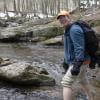






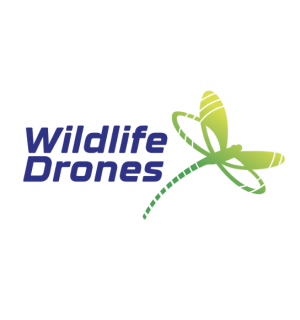

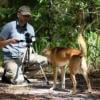














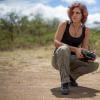

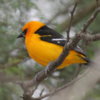


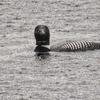






27 January 2023 10:28am
Thank You for the discussion threads.